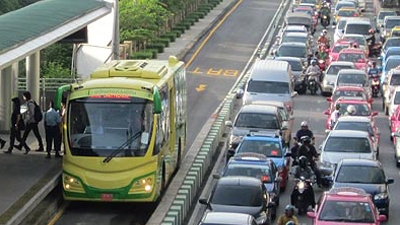As the world’s attention is directed toward the UN Conference on Sustainable Development in Rio de Janeiro, another global event is gaining momentum. The leaders of the 20 largest economies in the world are gathering over the next two days in Los Cabos, Mexico, to discuss the health of the global economy.
While they will consider immediate global concerns, such as the crisis in Europe, they will also discuss what will be required for the world to embark on a more sustainable, greener, and inclusive development path. Infrastructure will take center stage, as it did at the previous G20 Summits in Seoul and Cannes, but with a focus this time on urban transport.
The World Bank and the Asian Development Bank (ADB) are engaging the G20 leaders on ways to unlock the potential for green urban transport. In a new paper, Cities at a Crossroads: Unlocking the Potential of Green Urban Transport, they lay out the challenges and opportunities.
“Now is an opportunity to change gears on sustainable development – an opportunity to build the planning and policy structures, measurement systems, and ambition that the world needs to prepare its cities for the future,” said World Bank Vice President for Sustainable Development Rachel Kyte.
Why the focus on urban transport?
Transport enables access to jobs, education, healthcare, and markets. With mobility comes a range of associated economic costs. In Mexico City, for example, 20 percent of workers spend more than three hours traveling to and from work each day. Chronic traffic congestion is estimated to cost the equivalent of 3 percent of GDP in cities in the Republic of Korea.
Transportation is also the fastest growing consumer of fossil fuels and the fastest growing source of CO2 emissions. Thanks to rapid urbanization, cities now contribute 70 percent of energy-related carbon emissions, most of which come from transport. And with 1 billion cars already on the road, road transport accounts for about two-thirds of total transport emissions.



